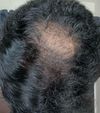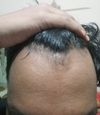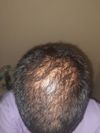community 9 months on Finasteride only and shedding the whole time. Iron supplements slowed down the shed. The point is: shedding doesn’t mean hairloss!
The conversation discusses using finasteride for hair loss, with iron supplements helping to slow shedding. The user emphasizes that shedding doesn't necessarily mean permanent hair loss.




